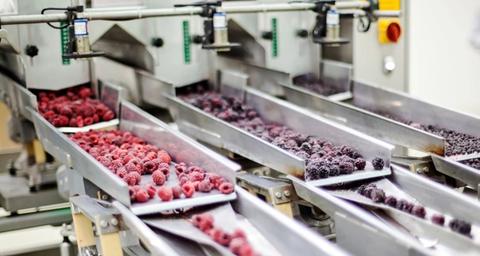11 Key Steps to Prevent Pests in Food Processing Facilities
1. Seal Entry Points
Prevent pests from entering by sealing cracks, crevices, gaps around doors and windows, vents, and utility lines. Use durable materials like caulk, weather stripping, and wire mesh.
If you're uncertain about which areas of your facility may be vulnerable, a pest control company can conduct a risk assessment and provide preventative infrastructure and proofing solutions.
2. Maintain Hygiene
Cleanliness is critical in preventing pest infestations. Regularly clean surfaces, equipment, and storage areas to eliminate food debris and odors that attract pests.
- Focus on hidden or hard-to-reach areas like behind equipment and under sinks.
- Keep floor drains clear of food debris and disinfect them frequently to prevent odors and pests.
- Move large equipment periodically for thorough cleaning to remove food particles and potential hiding spots for pests.
By staying proactive with these practices, you can protect your facility from pests, maintain high standards of safety, and avoid unnecessary losses.
5. Waste Management
- Immediate Disposal: Remove all food spills, leftovers, and trash as soon as possible to avoid attracting pests.
- Sealed Trash Cans: Keep trash bins tightly closed to prevent pests from accessing waste.
- Regular Emptying: Empty trash bins frequently to minimize odors and pest attraction.
- Pest-Resistant Bins: Use bins designed to resist pests and place them away from the main facility.
- Sort waste into categories like organic food waste, recyclables, and non-recyclables.
- Use clearly labeled bins or containers to ensure proper segregation and disposal.
6. Temperature Control
Stored product pests like flour moths and beetles thrive in temperatures of 25-30°C (77-86°F).
In facilities with heat-producing equipment, such as ovens, this temperature range can persist throughout the year.
To prevent insect activity, keep production and storage areas cooler, ideally below 14-15°C (57-59°F), using air conditioning.
7. Choosing the Right Lighting
The type of lighting used at a site can influence how attractive it is to flying insects and other pests. Mercury vapor lamps and certain fluorescent lights, often used for color rendering, are the most attractive to pests.
To reduce insect attraction, opt for lighting in the 575-600 nm range, such as high-pressure sodium lights.
Studies show that mercury vapor lights are 112 times more attractive to insects than sodium vapor lights. Mercury vapor lights emit a whitish-blue glow, while sodium vapor lights produce a softer yellowish tone, making them a better choice for minimizing pest presence.
9. Maintain the Facility Exterior
- Keep the building exterior clean and well-maintained. Trim vegetation to eliminate pest hiding spots and block entry points.
- Design outdoor lighting to prevent birds from nesting, and use darker building colors like blue or green to reduce insect attraction.
- Avoid white or light-yellow surfaces, which reflect UV light that draws insects.
11. Documentation and Record Keeping
Maintain detailed records of pest control activities, inspections, and corrective measures. Documentation helps identify patterns, improve processes, and provides essential data for audits or inspections.
Modern technologies like AI and data analytics can enhance pest management by predicting and preventing potential infestations.
How to Choose the Right Pest Control Partner for Your Food Processing Company?
Selecting the right pest control partner is crucial to ensuring a pest-free environment and peace of mind for your business. You need a trusted company that delivers excellent service, allowing you to focus on other priorities.
Look for a partner who tailors their services to fit your business needs, responds promptly when required, and offers a wide range of solutions—from cutting-edge technology to straightforward, effective methods.
> Discover the key factors to consider when evaluating pest control companies.
